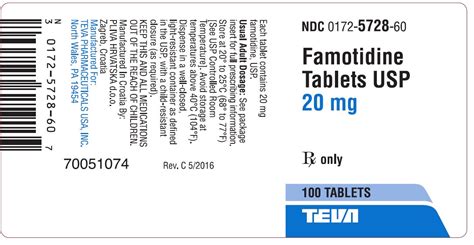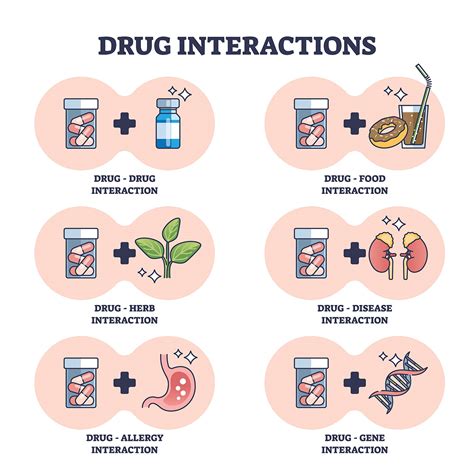Intro
Discover the uses and benefits of Famotidine, a heartburn medication, for acid reflux, peptic ulcers, and gastroesophageal reflux disease (GERD) treatment, offering relief and prevention.
The world of medicine is filled with numerous drugs that help alleviate various health conditions. One such medication is famotidine, which has been widely used for decades to treat certain disorders related to the stomach and esophagus. Famotidine is a type of histamine-2 (H2) blocker, which works by reducing the amount of acid produced in the stomach. This, in turn, helps to relieve symptoms such as heartburn, acid reflux, and stomach ulcers. In this article, we will delve into the uses and benefits of famotidine, exploring its mechanisms, applications, and potential side effects.
Famotidine has been a staple in the treatment of gastrointestinal disorders, particularly those related to excessive stomach acid production. Its ability to reduce acid secretion makes it an effective medication for conditions like gastroesophageal reflux disease (GERD), Zollinger-Ellison syndrome, and peptic ulcers. By decreasing the amount of acid in the stomach, famotidine helps to alleviate symptoms such as burning sensations in the chest, difficulty swallowing, and abdominal pain. Moreover, famotidine has been shown to promote healing of stomach ulcers and prevent their recurrence.
The importance of famotidine cannot be overstated, as it has revolutionized the treatment of acid-related disorders. With its ability to reduce stomach acid production, famotidine has become a go-to medication for individuals suffering from heartburn, acid reflux, and stomach ulcers. Additionally, its effectiveness in treating these conditions has made it a popular choice among healthcare providers. As we continue to explore the uses and benefits of famotidine, it becomes clear that this medication plays a vital role in managing gastrointestinal health.
What is Famotidine?

How Does Famotidine Work?
Famotidine works by blocking the action of histamine, a chemical that stimulates the production of stomach acid. By reducing the amount of histamine that binds to H2 receptors in the stomach, famotidine decreases the amount of acid produced. This, in turn, helps to alleviate symptoms related to excessive stomach acid production. The mechanism of action of famotidine is as follows: * Famotidine binds to H2 receptors in the stomach, blocking the action of histamine. * The reduction in histamine binding leads to a decrease in stomach acid production. * The decreased acid production helps to alleviate symptoms such as heartburn, acid reflux, and stomach pain.Benefits of Famotidine

Common Uses of Famotidine
Famotidine is commonly used to treat a variety of conditions related to excessive stomach acid production. Some of the most common uses of famotidine include: * Gastroesophageal reflux disease (GERD) * Zollinger-Ellison syndrome * Peptic ulcers * Heartburn and acid reflux * Stomach pain and difficulty swallowingSide Effects of Famotidine

Precautions and Warnings
While famotidine is generally safe to use, there are certain precautions and warnings that should be taken into consideration. Some of these include: * Allergic reactions: Individuals who are allergic to famotidine or other H2 blockers should not use this medication. * Pregnancy and breastfeeding: Famotidine should be used with caution in pregnant and breastfeeding women, as its safety has not been fully established. * Interactions with other medications: Famotidine can interact with certain medications, such as antacids and blood thinners, which can affect its efficacy and increase the risk of side effects.Interactions with Other Medications

Dosage and Administration
The dosage and administration of famotidine vary depending on the condition being treated and the individual's response to the medication. Some of the common dosages of famotidine include: * Gastroesophageal reflux disease (GERD): 20-40 mg twice a day * Zollinger-Ellison syndrome: 20-160 mg every 6 hours * Peptic ulcers: 40 mg once a dayConclusion and Final Thoughts

We invite you to share your thoughts and experiences with famotidine in the comments section below. Have you used famotidine to treat a condition related to excessive stomach acid production? What were your results, and did you experience any side effects? Your feedback can help others make informed decisions about their treatment options.
What is the primary use of famotidine?
+The primary use of famotidine is to reduce stomach acid production, which helps to alleviate symptoms related to excessive stomach acid production, such as heartburn, acid reflux, and stomach ulcers.
Can famotidine be used to treat other conditions?
+Yes, famotidine can be used to treat other conditions, such as Zollinger-Ellison syndrome and peptic ulcers. However, its use should be guided by a healthcare provider, as the dosage and administration may vary depending on the condition being treated.
What are the common side effects of famotidine?
+The common side effects of famotidine include headache, dizziness, constipation, diarrhea, stomach pain, and nausea and vomiting. However, these side effects are generally mild and temporary, and may resolve on their own without treatment.
